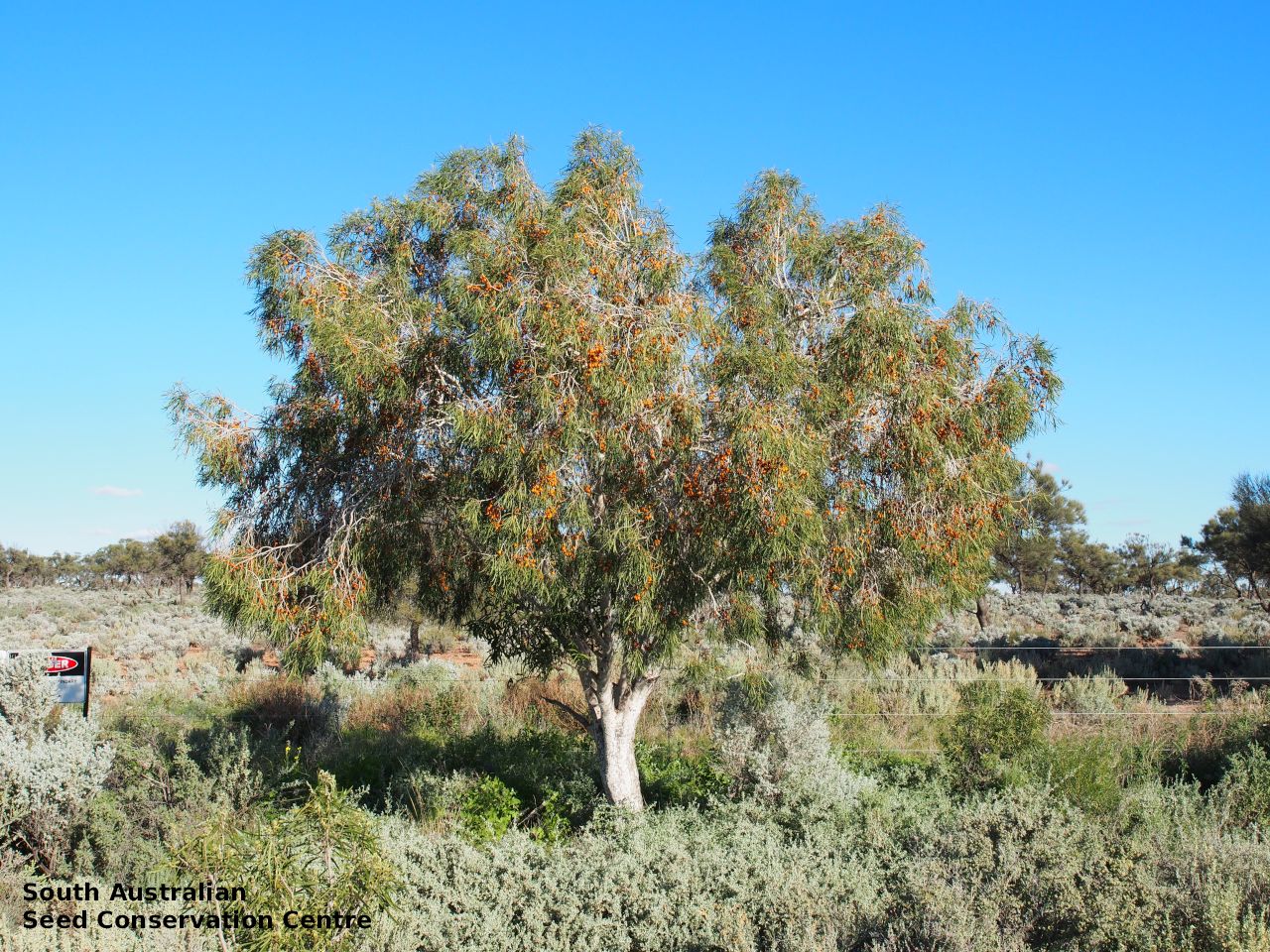
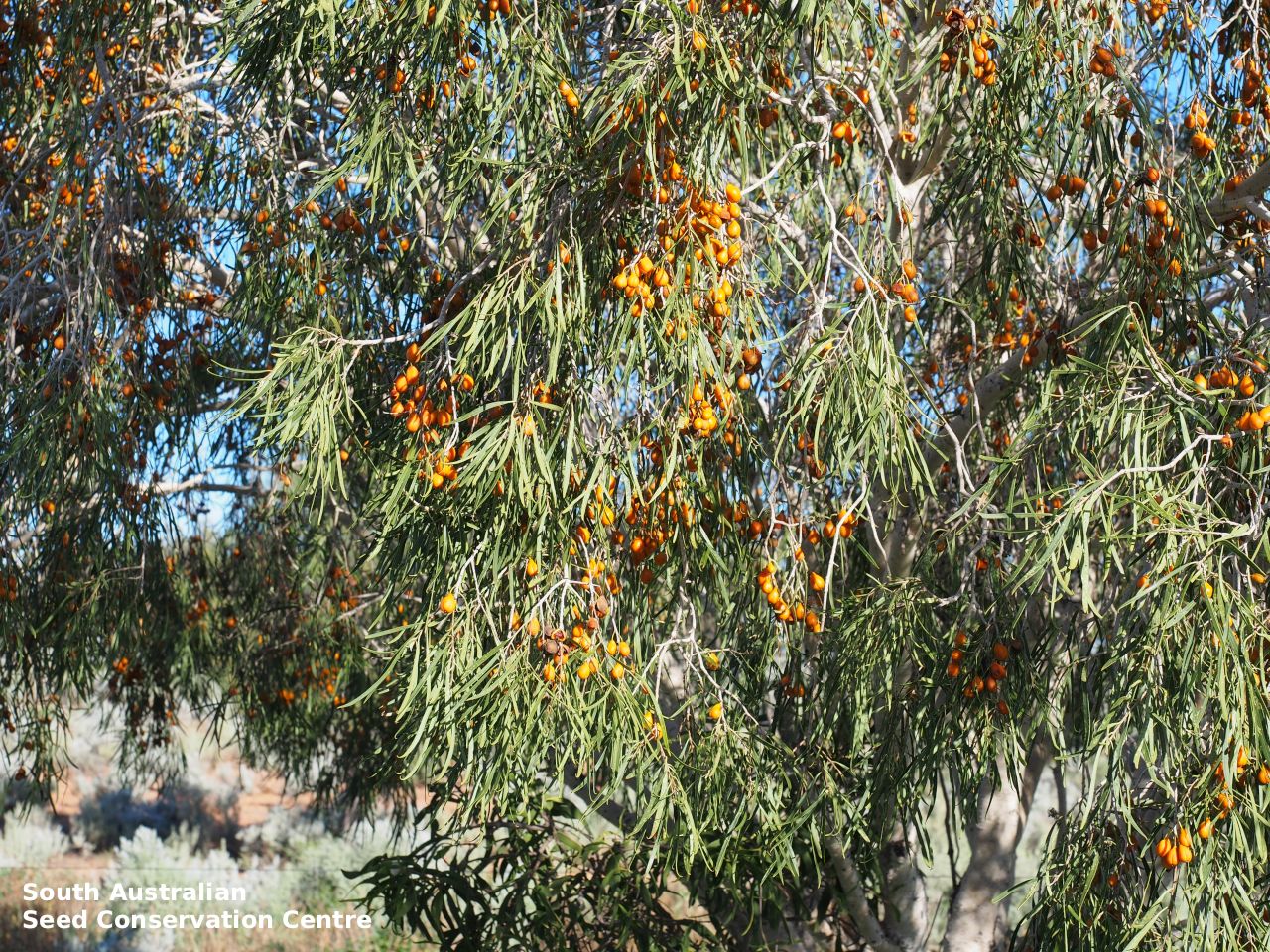

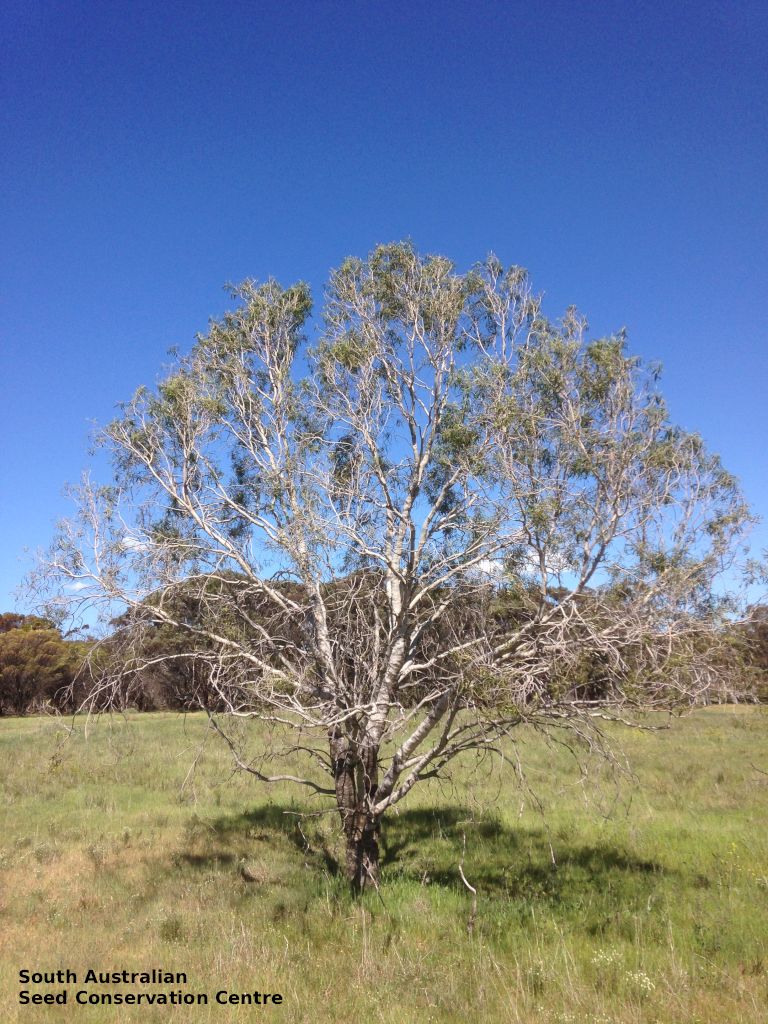
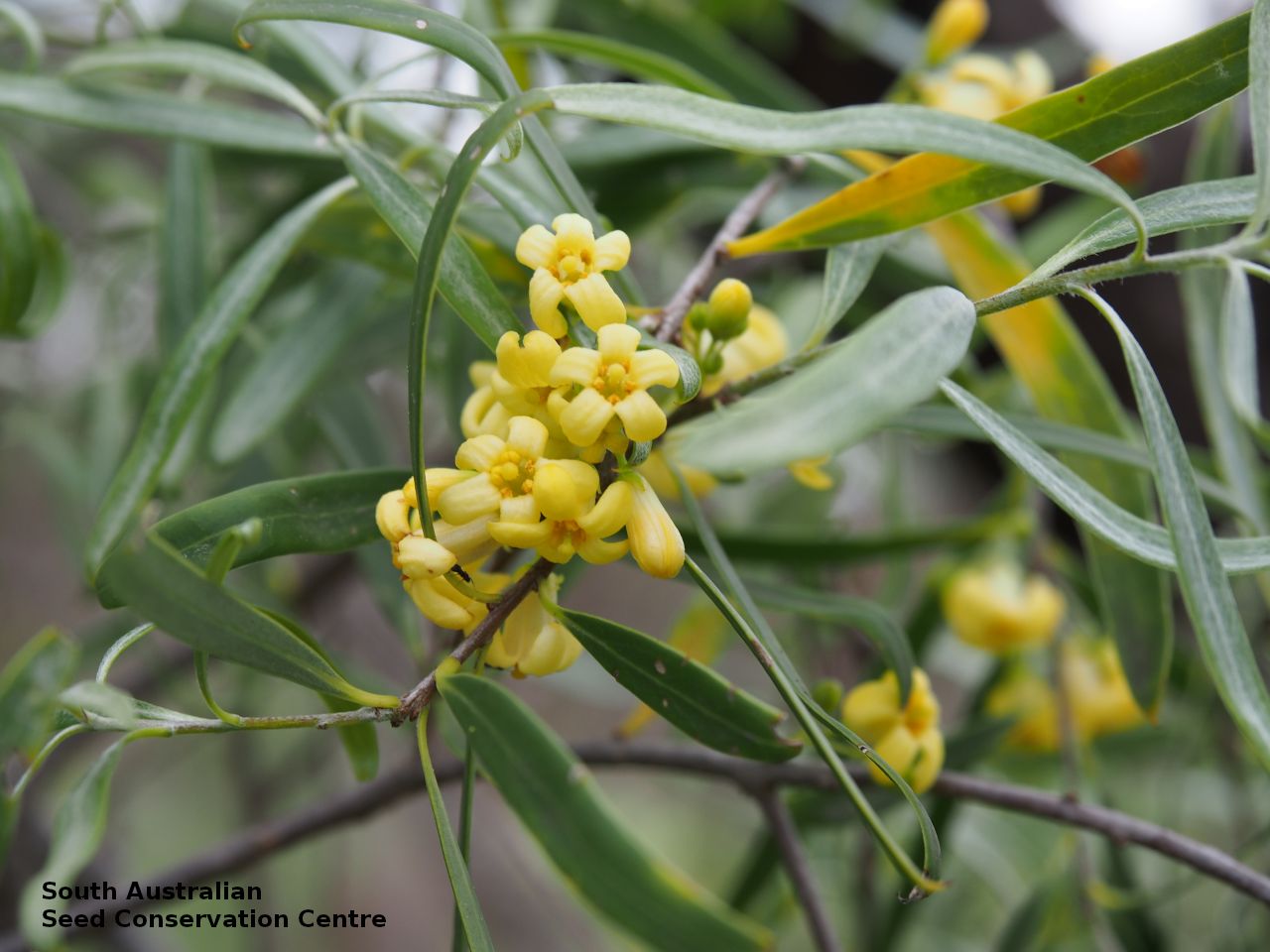
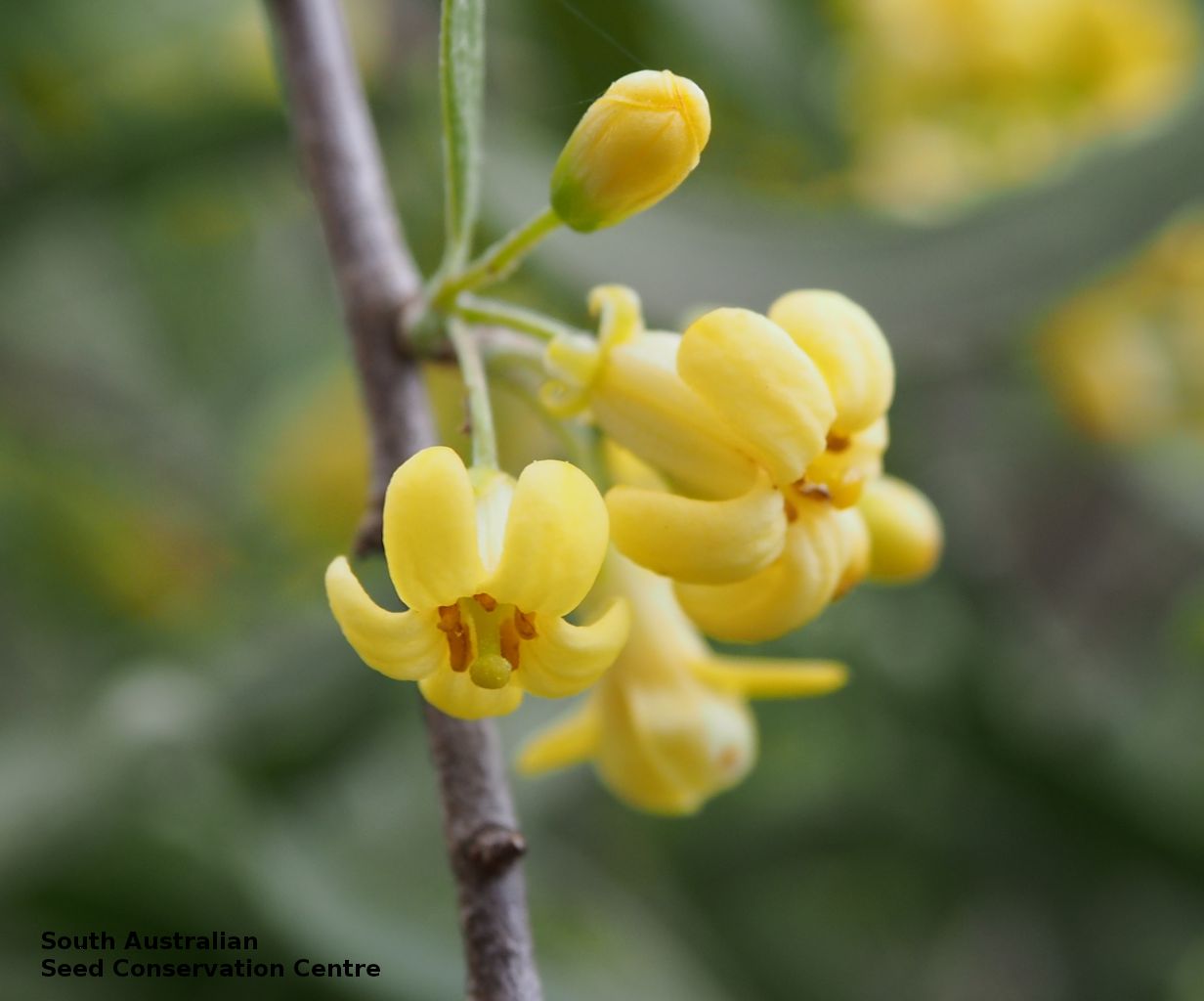
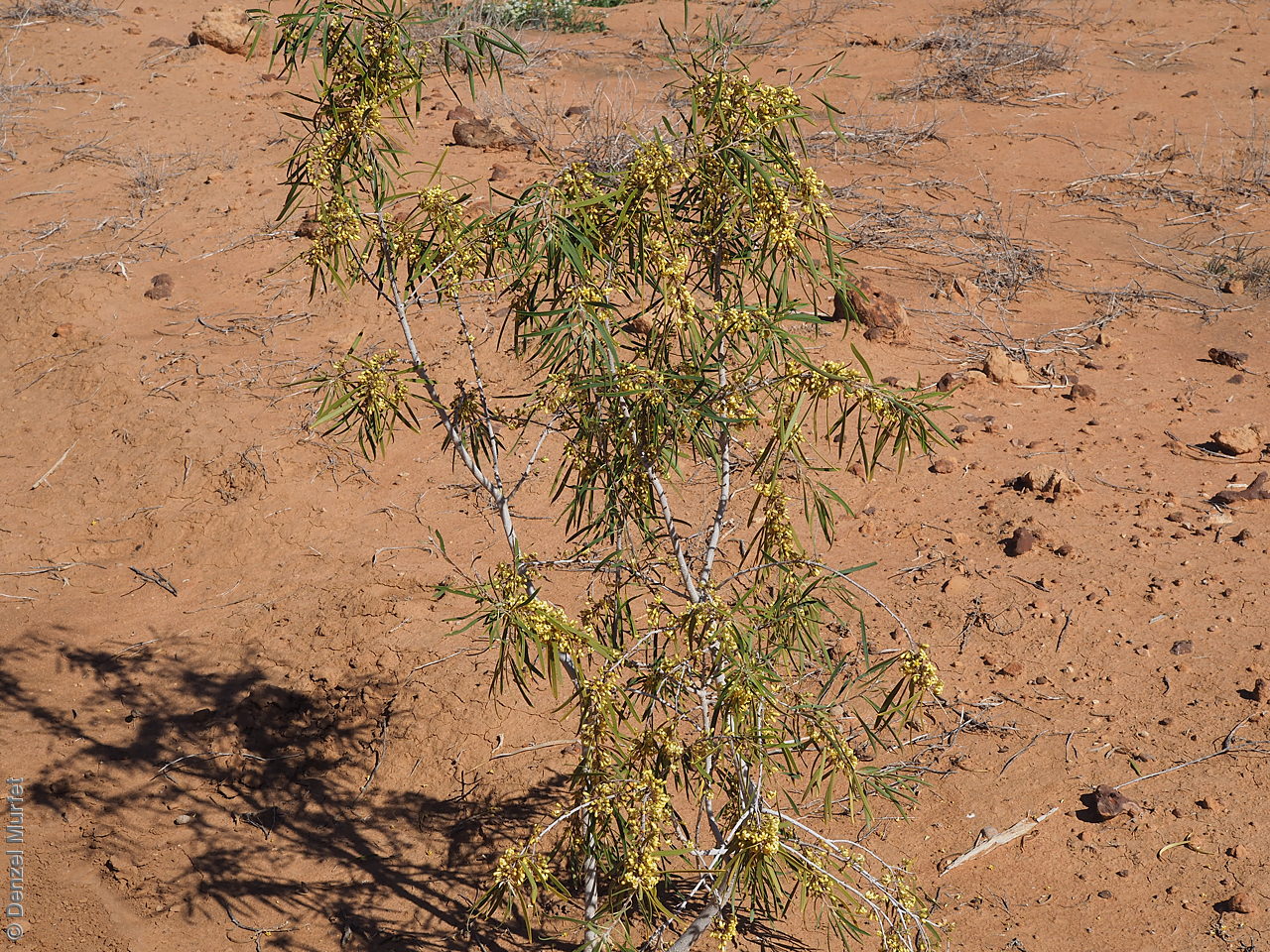
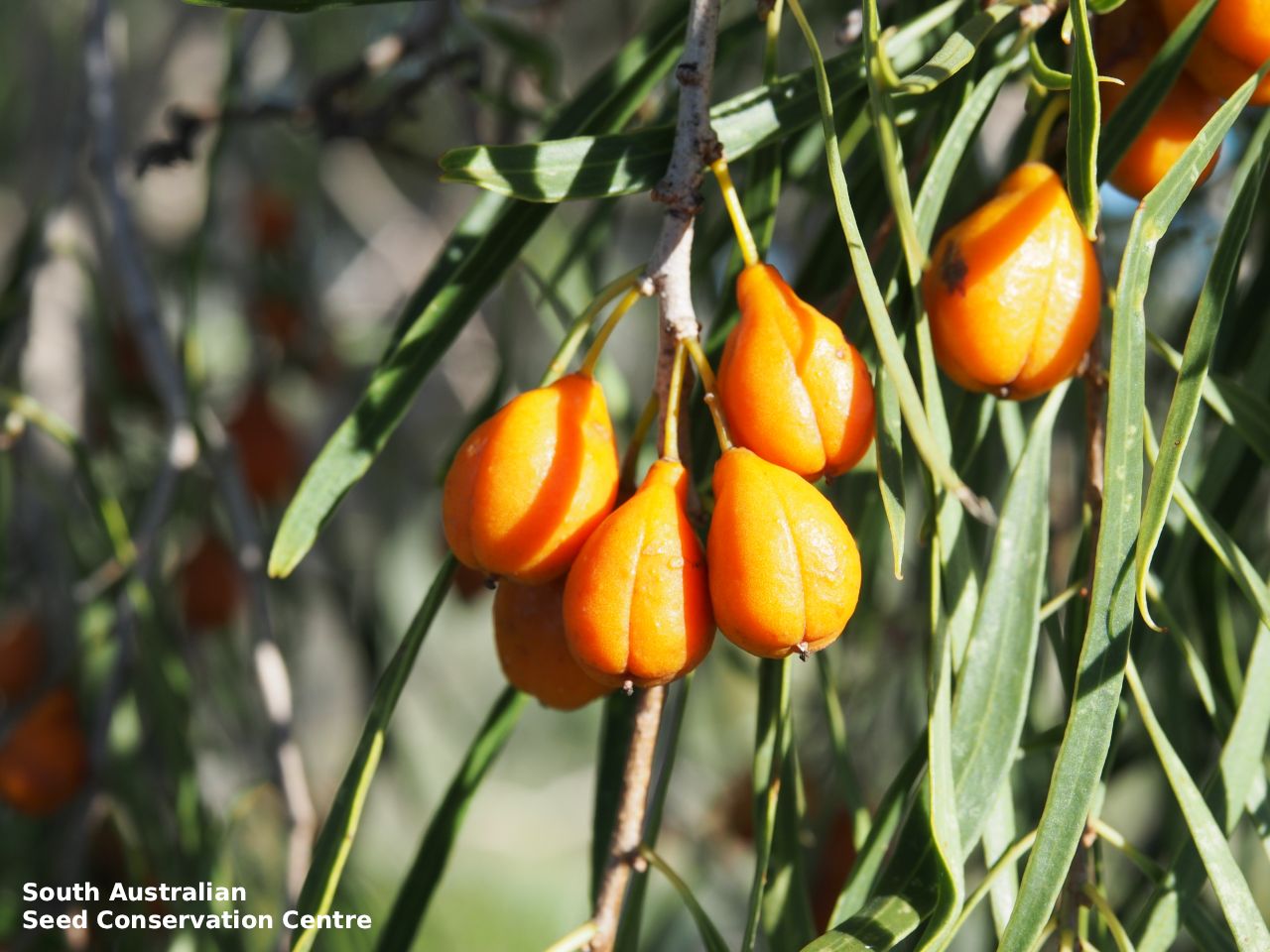
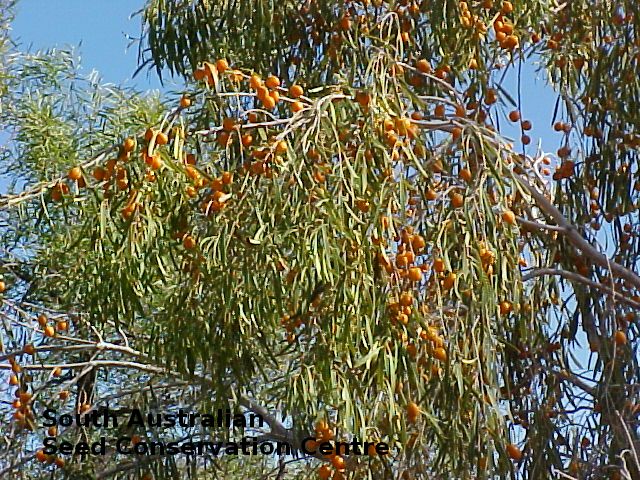
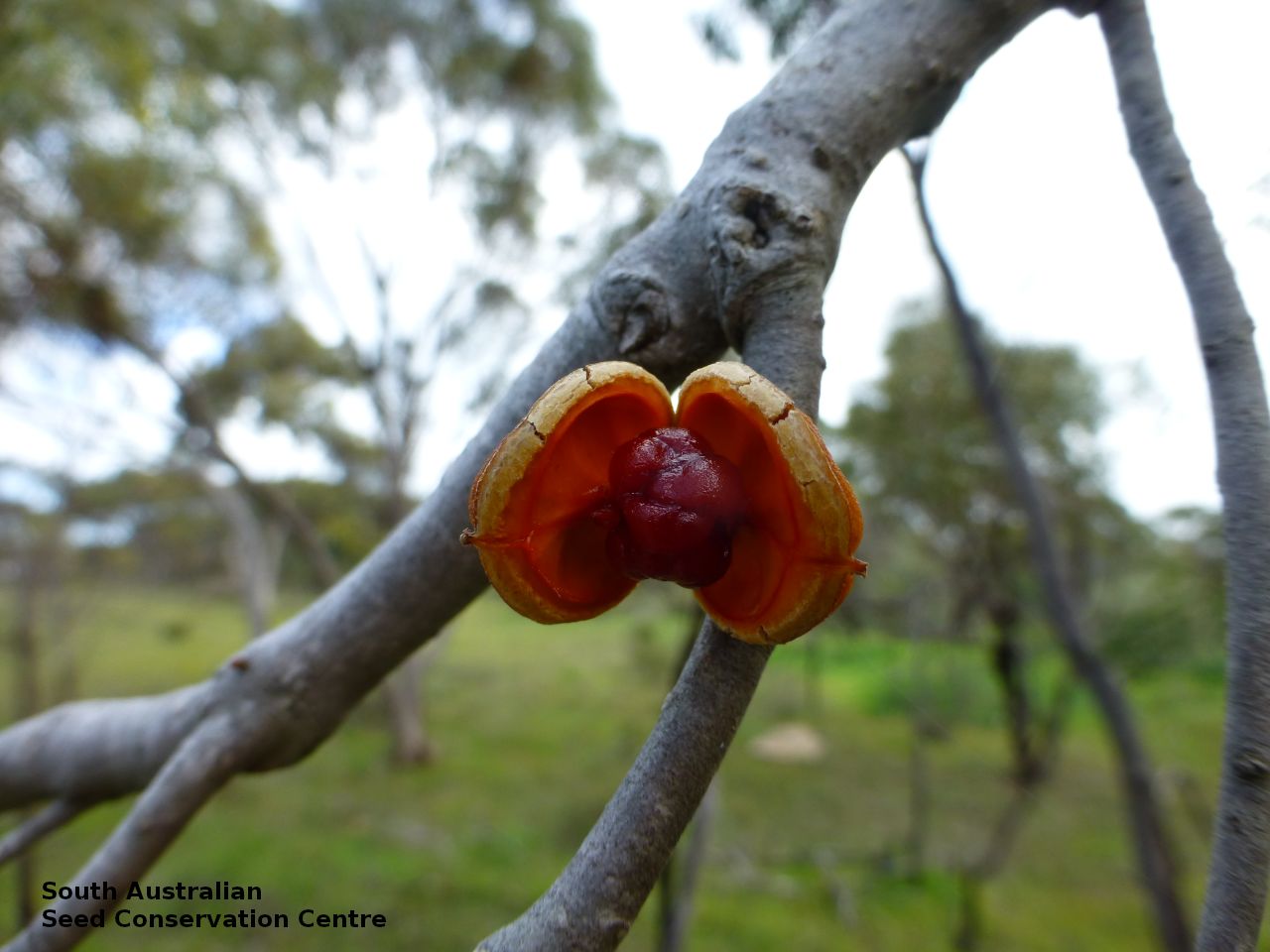
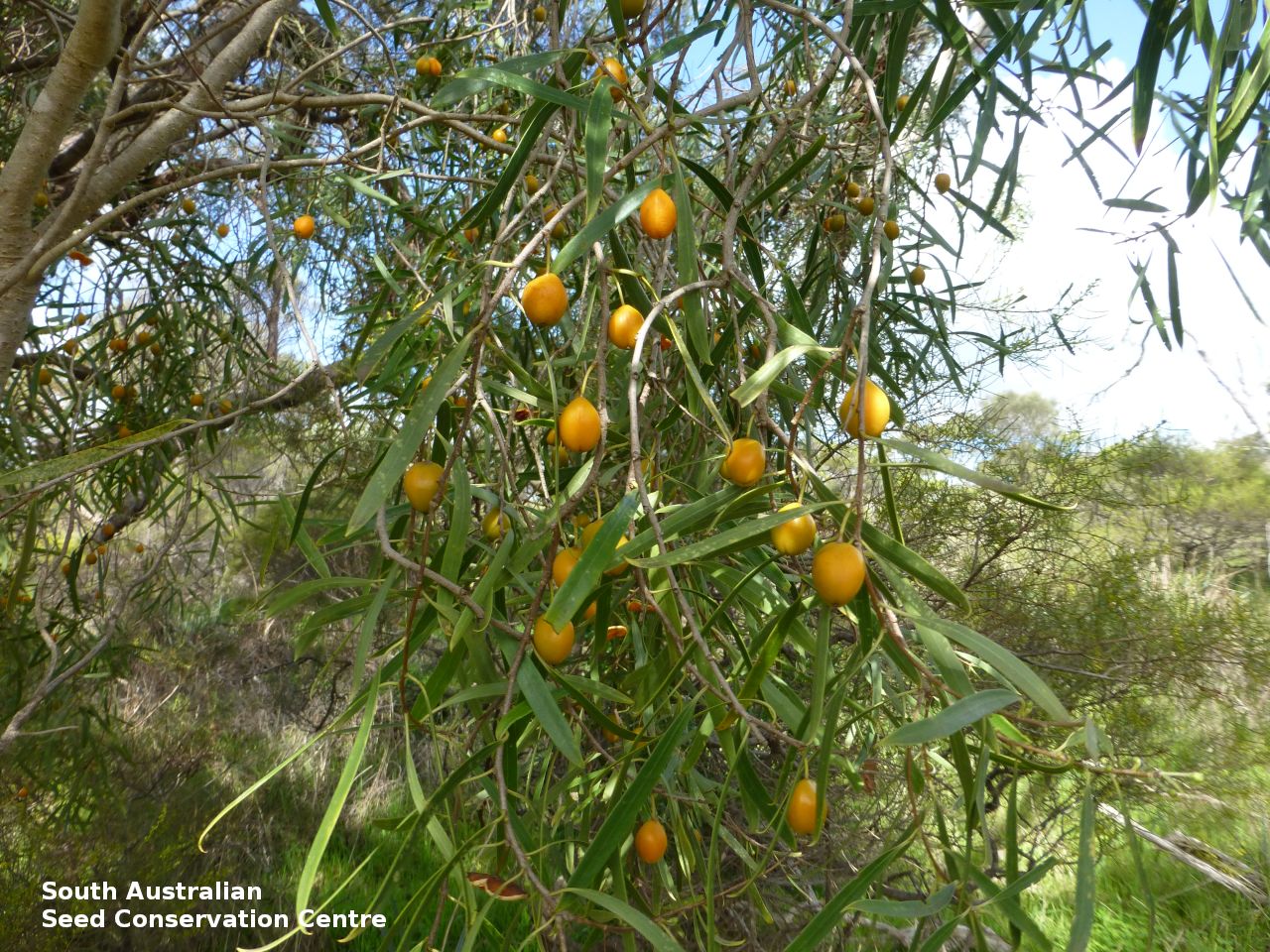
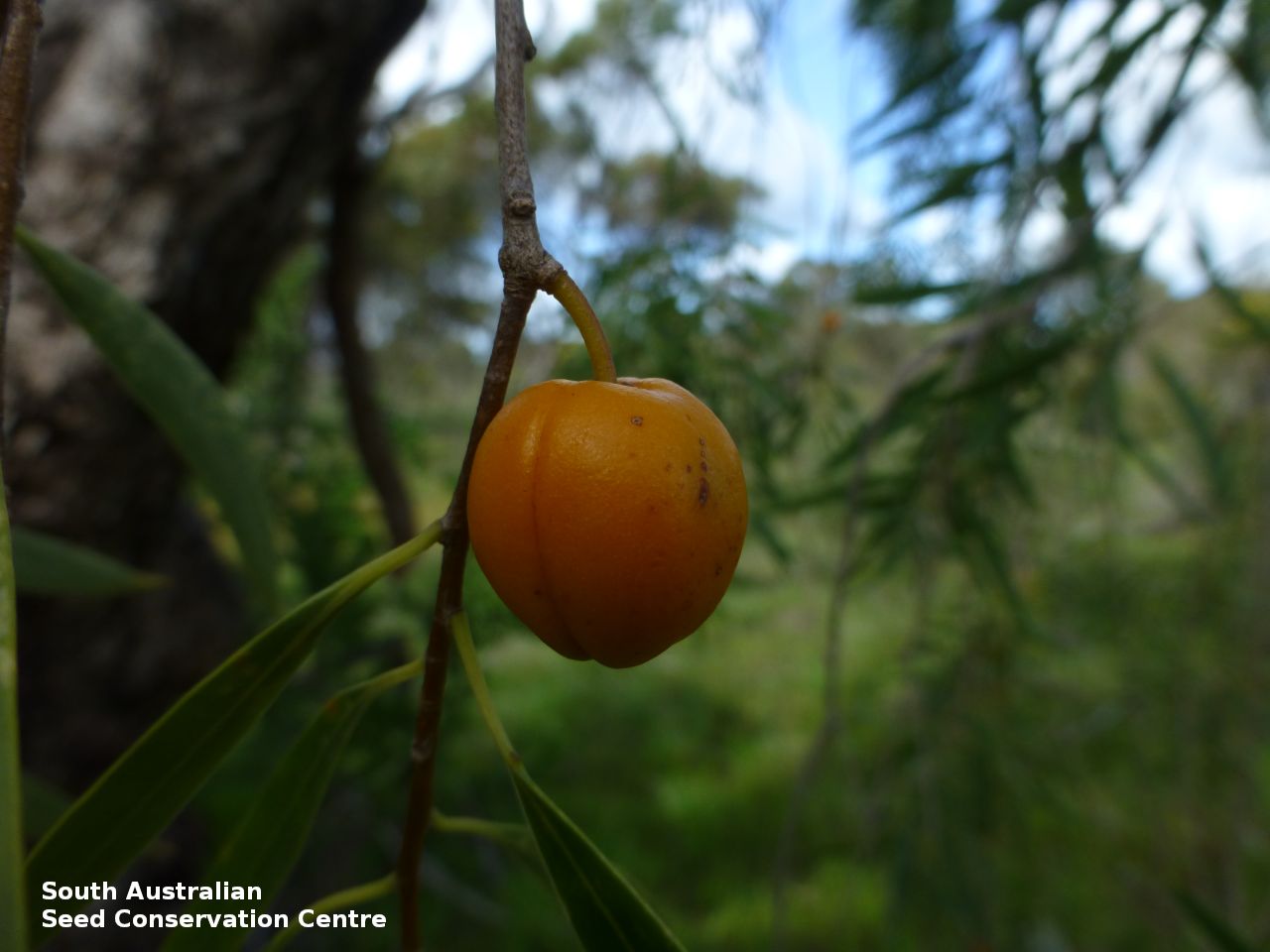
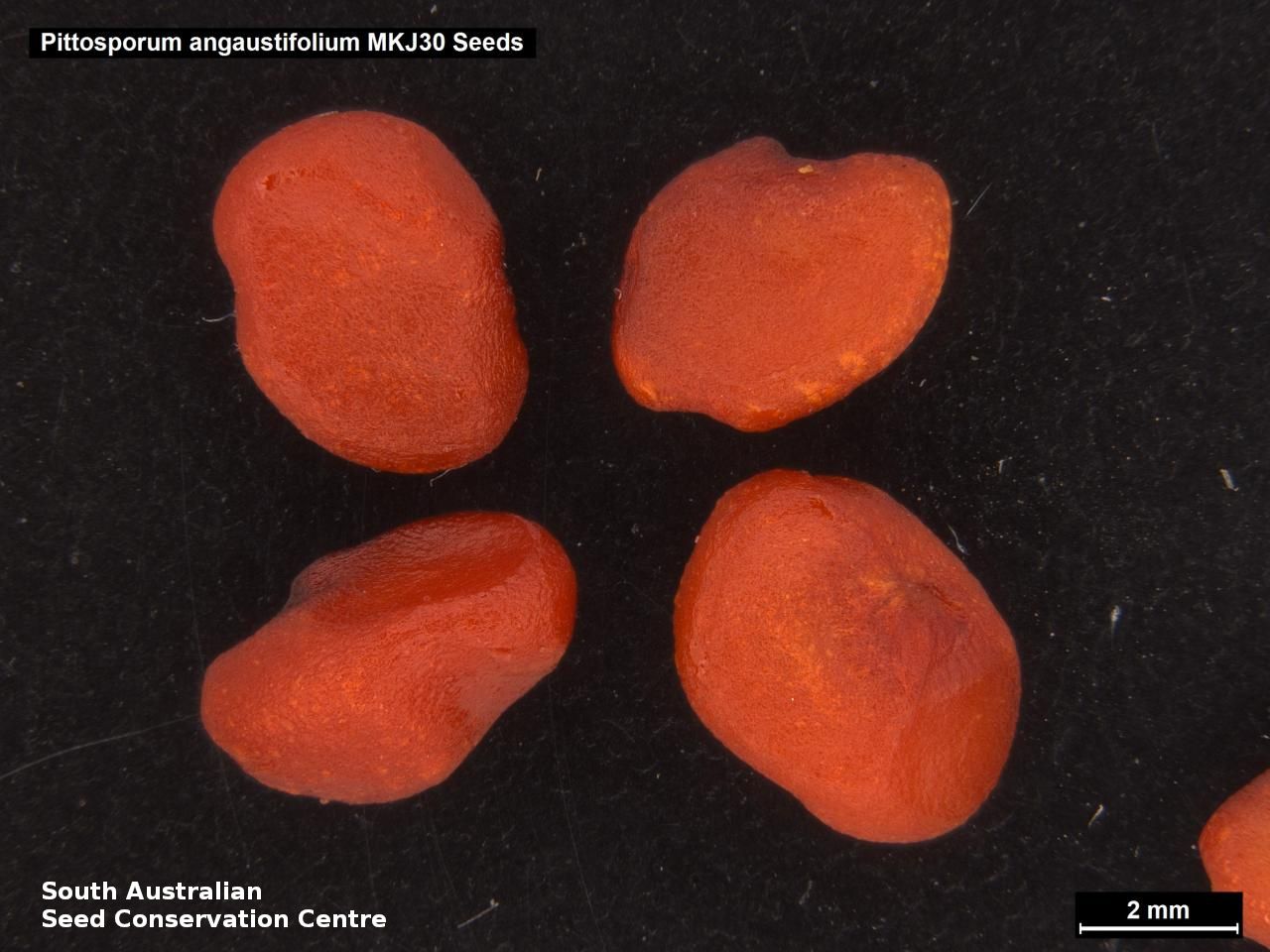


Botanical art
Prior names
Pittosporum ligustrifolium
Pittosporum roeanum
Pittosporum oleaefolium
Pittosporum phillyreoides
Pittosporum lanceolatum, nom.inval.
Pittosporum salicinum, partly
Pittosporum longifolium
Pittosporum acacioides
Pittosporum phylliraeoides var. microcarpa
Common names
Native apricot
Weeping Pittosporum
Etymology
Pittosporum from the Greek 'pitta' meaning pitch and 'spora 'meaning a seed; referring to the sticky covering of the seed. Angustifolium from the Latin 'agustus' meaning narrow and 'folium' meaning leaf.
Distribution and status
Found in all parts of South Australia except in the south of the South-east. Also found in Western Australia, Northern Territory, Queensland, New South Wales and Victoria. Native. Common in South Australia. Common in the other States.
Herbarium regions: North Western, Lake Eyre, Nullarbor, Gairdner-Torrens, Flinders Ranges, Eastern, Eyre Peninsula, Northern Lofty, Murray, Yorke Peninsula, Southern Lofty, Kangaroo Island, South Eastern, Green Adelaide
NRM regions: Adelaide and Mount Lofty Ranges, Alinytjara Wilurara, Eyre Peninsula, Kangaroo Island, Northern and Yorke, South Australian Arid Lands, South Australian Murray-Darling Basin, South East
AVH map: SA distribution map (external link)
Plant description
Shrub or a tree to 10 m tall with long green alternate leaves, drooping on the branches. Flowers unisexual (possibly sometimes bisexual), sweet-scented; males mostly in axillary clusters of up to 6; females usually solitary in axils; yellow-cream with curved petals. Flowering between August and November. Fruits are orange ovoid capsules that split into two and contain numerous seeds. Seeds are red sticky seeds to 6 mm long and 4 mm wide. Seed embryo type is linear underdeveloped.
Seed collection and propagation
Collect seeds between September and February. Collect by hand fruits that are orange in colour, opened or unopened. Place the fruit in a tray and leave to dry for at least two weeks. The fruit will split and open as it dries. Once the fruits split, use your fingers or a small spoon to extract the seeds. Store the seeds with a desiccant such as dried silica beads or dry rice, in an air tight container in a cool and dry place. From one collection, the seed viability was high, at 100%.
| Location | No. of seeds (weight grams) | Number of plants | Date collected | Collection number Collection location | Date stored | % Viability | Storage temperature |
|---|---|---|---|---|---|---|---|
| BGA MSB | 2,990 (69.3 g) 2,990 (69.3 g) | 100+ | 11-May-2004 | MKJ30 Southern Lofty | 1-Sep-2004 | 100% | +5°C, -18°C |
| BGA | 1,960 (52.5 g) | 20+ | 23-Mar-2004 | SMK78 Southern Lofty | 1-Nov-2017 | 100% | -18°C |
| BGA | 550 (9.86 g) | 8 | 24-Jul-2017 | KHB950 North Western | 30-Jun-2018 | 100% | -18°C |
| BGA | 11,500 (18,510 g) | 25 | 26-Jun-2019 | Poldina Siding Eyre Peninsula | 24-Jun-2020 | 94% | -18°C, -80°C |
Number of plants: This is the number of plants from which the seeds were collected.
Collection location: The Herbarium of South Australia's region name.
% Viability: Percentage of filled healthy seeds determined by a cut test or x-ray.